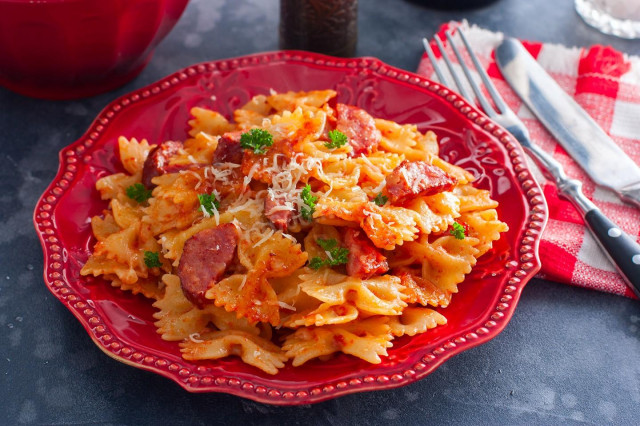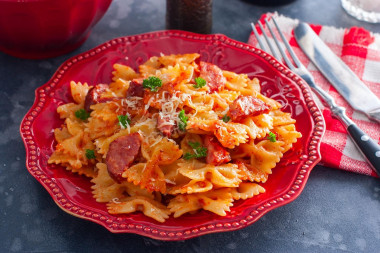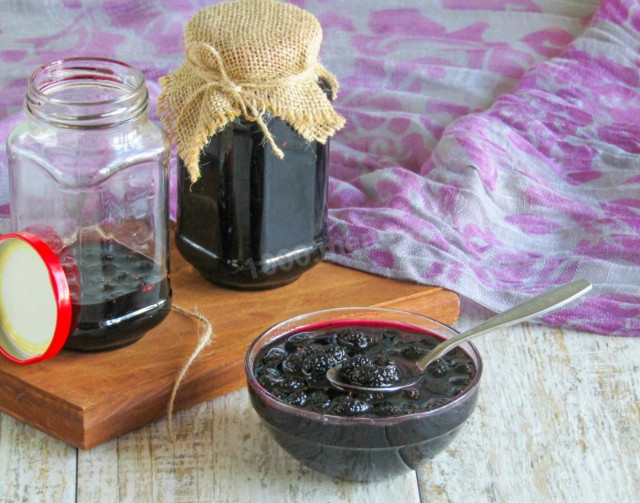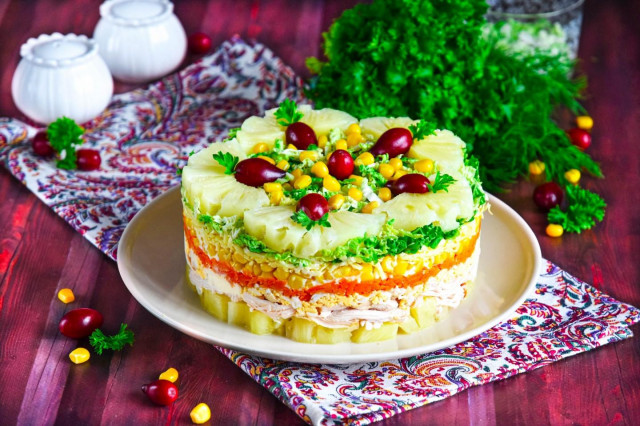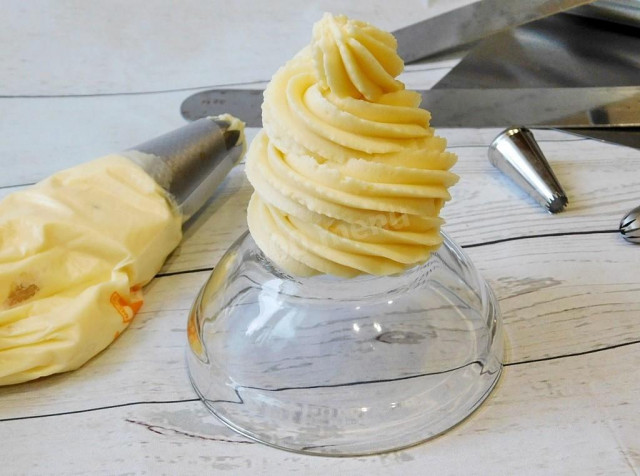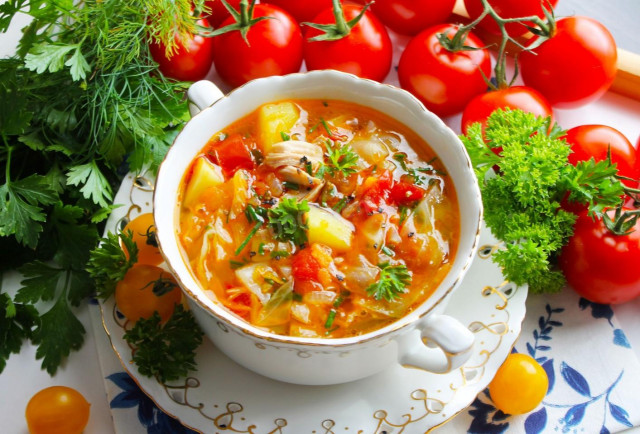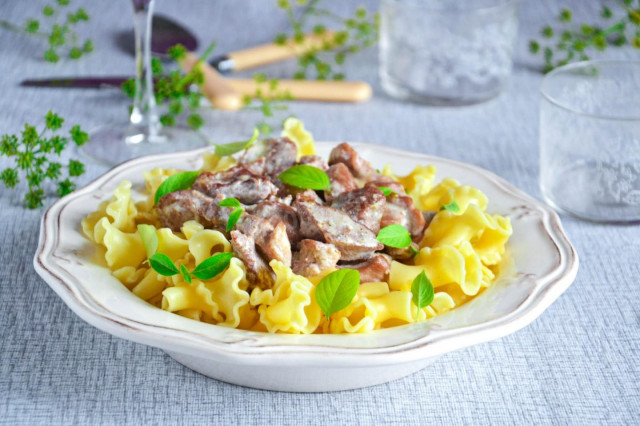Composition / ingredients
Step-by-step cooking
Step 1:
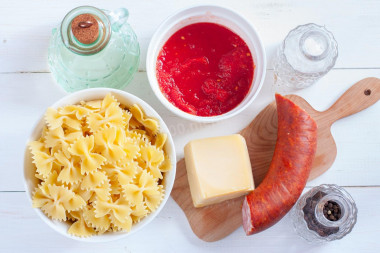
For cooking, you need to prepare the necessary ingredients. Macaroni is better to take hard varieties, I chose bows (farfalle), but you can also take any other kind according to your taste. Tomato paste can be replaced with ketchup, tomatoes in their own juice or fresh tomatoes. Make cross-shaped incisions on the surface of fresh fruits and lower them into boiling water for 1-2 minutes, then pour cold water. Remove the skin and puree them in a blender.
Step 2:
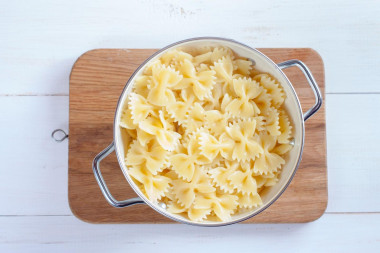
How to boil pasta properly? Pour water (about 2 liters) into a wide saucepan. Put it on the fire. When it boils, add salt (about 10 g of salt per 100 g of pasta). Lay out the pasta. Cook them over low heat, stirring occasionally. To prevent the pasta from sticking together, pour in 1 teaspoon of vegetable oil. Do not close the lid. Boil until al dente (read the instructions for cooking time). Flip it into a colander. It is not necessary to rinse with water.
Step 3:
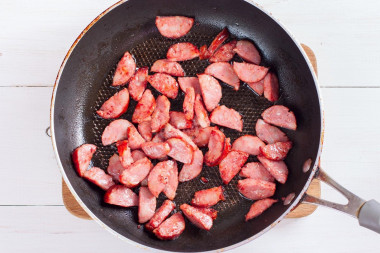
What kind of sausage to buy? I took semi-smoked, but smoked, boiled sausage, ham, hunting sausages or boiled chicken meat will do. Peel the sausage from the skin, cut it into small slices or cubes. Heat refined vegetable oil with a high smoking temperature in a large frying pan. Fry the sausage, stirring until golden brown.
Step 4:
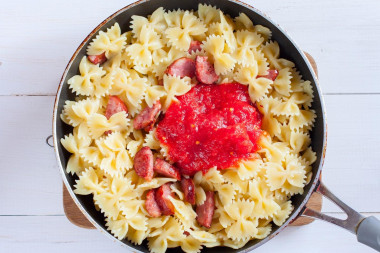
Add boiled pasta, tomatoes or tomato paste to the sausage pan, add salt and pepper to taste. Mix everything together.
Step 5:
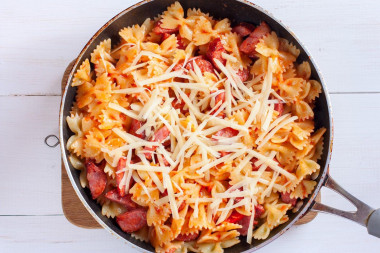
For a better taste, rub the cheese to the pasta, mix. Hard cheese can be any, the main thing is that it is delicious. I took the parmesan. Cover the pan with a lid and keep the dish on low heat for about 3-4 minutes. Turn off the fire.
Step 6:
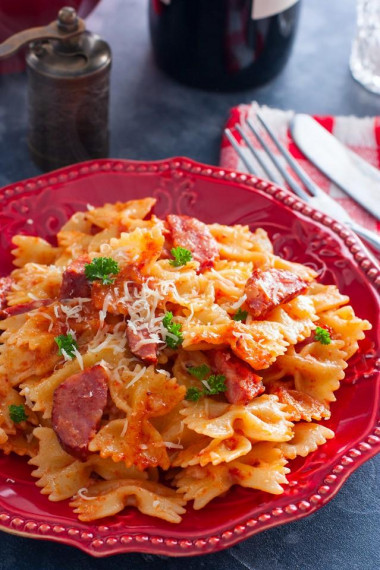
Serve the dish hot. Put the pasta in each plate. Sprinkle grated cheese on top and sprinkle with chopped fresh herbs (parsley, dill, green basil).
The recipe can be supplemented with fried finely chopped onions and bell pepper.
From spices, you can add chopped garlic (1-2 cloves), Italian herbs, paprika (1 tsp. l.), a pinch of thyme and red hot pepper.
The dish can be prepared with different types of sausages. For example, fry smoked and boiled sausage at once.
Caloric content of the products possible in the composition of the dish
- Pasta, premium grade, fortified - 337 kcal/100g
- Pasta, premium, dairy - 309 kcal/100g
- Pasta, premium grade, egg - 342 kcal/100g
- Pasta made from flour of the 1st grade - 333 kcal/100g
- Pasta made of flour in / with - 338 kcal/100g
- Boiled pasta - 135 kcal/100g
- Pasta - 338 kcal/100g
- Dutch cheese - 352 kcal/100g
- Swiss cheese - 335 kcal/100g
- Russian cheese - 366 kcal/100g
- Kostroma cheese - 345 kcal/100g
- Yaroslavsky cheese - 361 kcal/100g
- Altai cheese 50% fat content - 356 kcal/100g
- Soviet cheese - 400 kcal/100g
- Cheese "steppe" - 362 kcal/100g
- Uglich cheese - 347 kcal/100g
- Poshekhonsky cheese - 350 kcal/100g
- Lambert cheese - 377 kcal/100g
- Appnzeller cheese with 50% fat content - 400 kcal/100g
- Chester cheese with 50% fat content - 363 kcal/100g
- Edamer cheese with 40% fat content - 340 kcal/100g
- Cheese with mushrooms of 50% fat content - 395 kcal/100g
- Emmental cheese with 45% fat content - 420 kcal/100g
- Gouda cheese with 45% fat content - 356 kcal/100g
- Aiadeus cheese - 364 kcal/100g
- Dom blanc cheese (semi-hard) - 360 kcal/100g
- Cheese "lo spalmino" - 61 kcal/100g
- Cheese "etorki" (sheep, hard) - 401 kcal/100g
- White cheese - 100 kcal/100g
- Fat yellow cheese - 260 kcal/100g
- Altai cheese - 355 kcal/100g
- Kaunas cheese - 355 kcal/100g
- Latvian cheese - 316 kcal/100g
- Limburger cheese - 327 kcal/100g
- Lithuanian cheese - 250 kcal/100g
- Lake cheese - 350 kcal/100g
- Gruyere cheese - 396 kcal/100g
- Vegetable oil - 873 kcal/100g
- Tomato paste - 28 kcal/100g
- Salt - 0 kcal/100g
- Semi-smoked sausage "Krakow" - 466 kcal/100g
- Semi-smoked sausage "Moscow" - 406 kcal/100g
- Pepper - 26 kcal/100g

